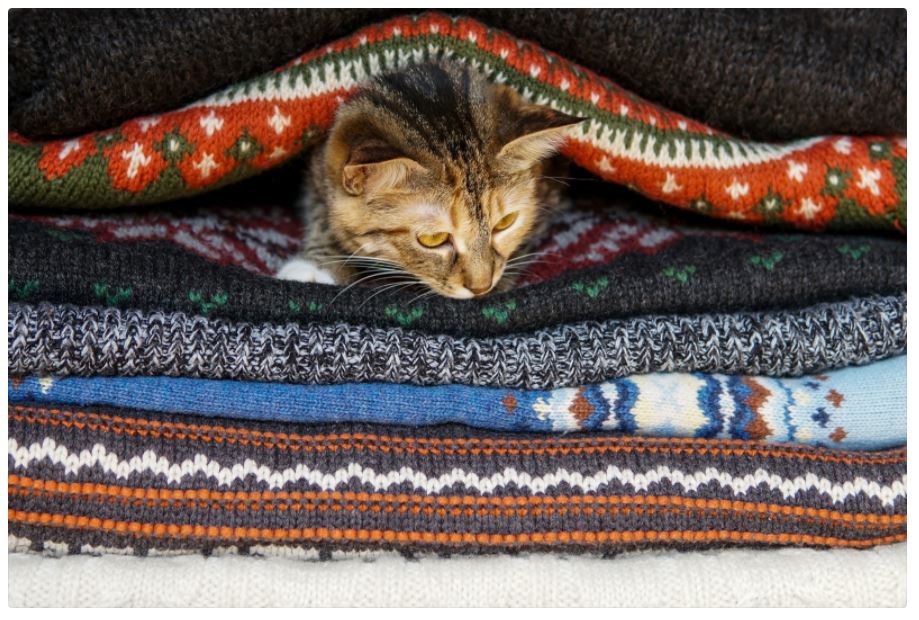
Did you know that people only wear 20 percent of our closet, 80 percent of the time? When you’re ready to downsize your wardrobe to the things you actually wear, what’s the best way to get rid of old clothes that you’ve loved so much?
When you’d prefer to see your old clothes go to a good home and not straight to the trash, check out this list of where to sell, swap, donate and recycle your old clothes.
Where to Sell Your Clothes
If you have quite a few name brand clothes or items that are still in very good condition, you can go to for-profit secondhand stores and apps like Poshmark, Shopify, Buffalo Exchange, eBay, Platos, or some local consignment shops. Selling your clothes is a quick and easy way to earn a little cash, but you can kick it old school and host a garage sale.
Where to Donate Clothes
We do not discourage any form of donation, but it’s good to know all your options. When a big bag of donated clothing is dropped off at a thrift shop, or even if you used a clothing donation pick up service, not all of it is sold, recycled, or even put out on the shelves.
To ensure your items are going to be sold or recycled, we encourage you to find charitable organizations or clothing drives that take specific items. Your clothing may fit someone better in a particular niche charity rather than a generic one. Goodwill is obviously a well-known fall back for donating most of your goods, so no one really has any reason not to donate clothing. But by spreading your clothes to charities seeking your items, your kind donation will go a lot further.
Does Goodwill Recycle Clothes?
Yes, they do! Clothing that isn’t able to be sold in Goodwill’s thrift stores is sent to a textile recycler. If you’re looking for a donation center that does the best for the community and the environment, we highly recommend donating your clothes to Goodwill, since Goodwill does recycle clothes.
Clothing Donation Bins
Before you go and google “clothes donation bin near me”, you should know that not all clothing donation bins are operated by or for charities. Some of the clothes donation bins you’ll find in your area might actually be operated for a for-profit organization with a charitable-sounding name. It’s always best to stick to the clothes donation bins that clearly state the name of a reputable charity, like The Salvation Army or the American Kidney Fund.
Where and How to Recycle Clothes
Now, this is very important. Please do not donate the worst in your closet. You know, the clothing or accessory you wouldn’t even want your mother, grandma, or loved one borrowing or even seeing. Before tossing these items, triple-check the ways that you can recycle them.
If you don’t know what to do with old clothes that cannot be donated, recycling them is your next most eco-friendly bet to ensure you do the best.
Did you ask, “But why?” C’mon. Did we miss something, or do we all live on the same planet? We’re trying to keep the environment alive and well. Thanks to “fast fashion,” the U.S. alone contributes to about 21 billion pounds of textile waste to landfills each year. Did you know leather shoes can take up to 40 years to decompose? If you’re shocked by that, rubber-boot soles can take up to 80 years! Nylon fabrics can take 30-40 years to break down, and wool clothing can take up to 5 years. Even cotton can take up to 3 months to break down. So, let’s work together by diverting clothing from landfills for as long as we can.
Upcycling Clothing
Upcycling your clothing, which is creatively reusing old textiles, is useful for not only reducing waste in your home, but it saves you money. One example of upcycling is through reusing cotton t-shirts to make fabulous cleaning rags. Get creative with it and cut them into squares or other shapes for things like cleaning, napkins with crazy designs, or tie-dye hankies. There’s no limit to the creative things you can make.
Composting Clothing
Composting is the process of making a heap of wet organic matter, also known as green waste, out of leaves, grass, food scraps, and other organic materials. Some people choose to do this at home to lower their waste and reduce their environmental footprint. If your clothes are made from natural textures and fibers like cotton, wool, silk, etc., you can compost them.
Recycling Clothing and Textiles
Textile recycling is when textiles are salvaged from old clothing and then recovered for reuse depending on several things like durability. Some for-profit companies like H&M and Levi Strauss & Co. encourage customers to bring back old clothes to their retail locations, so they can be reused or recycled. This isn’t exactly the best option, just cause the clothes often are sold internationally and only a small portion of the money will go to benefiting the needy.

Recent Comments